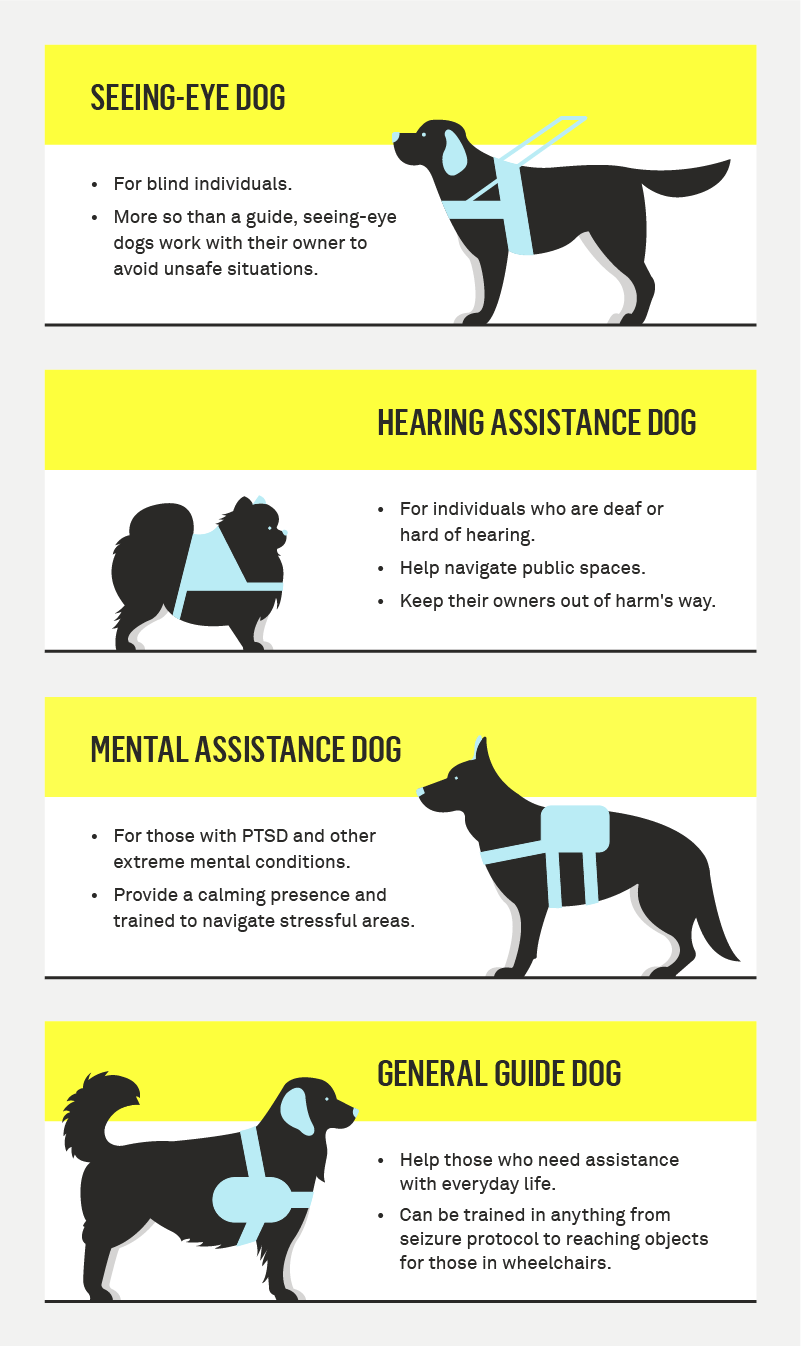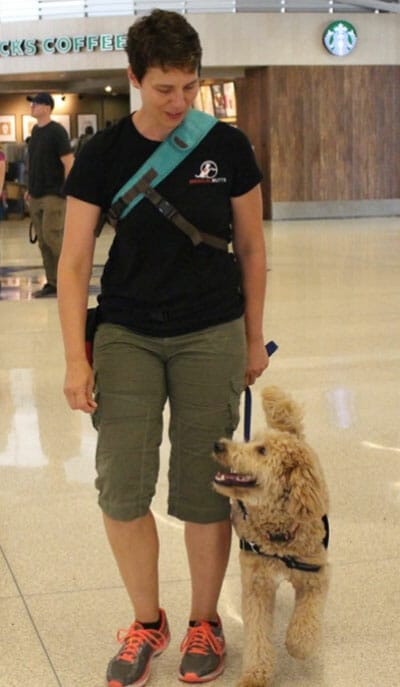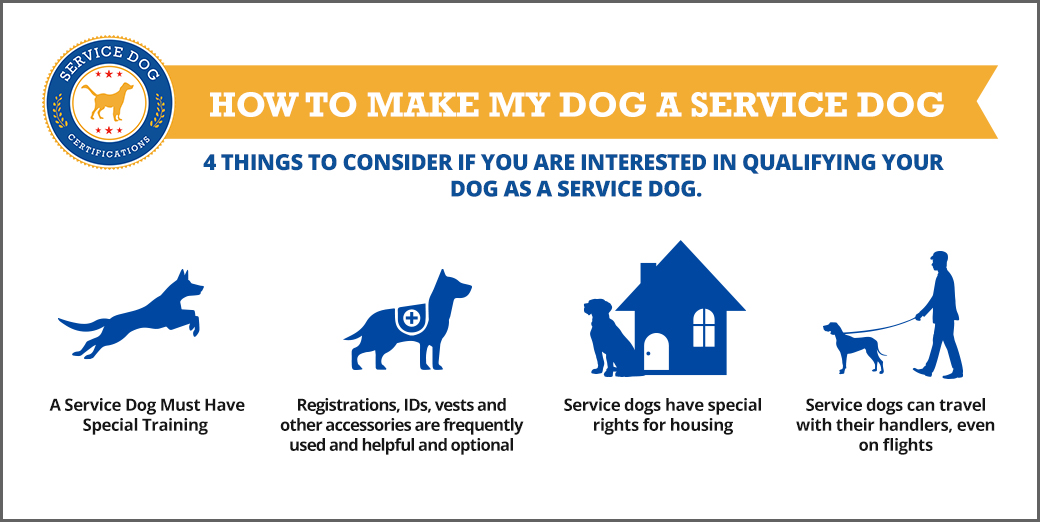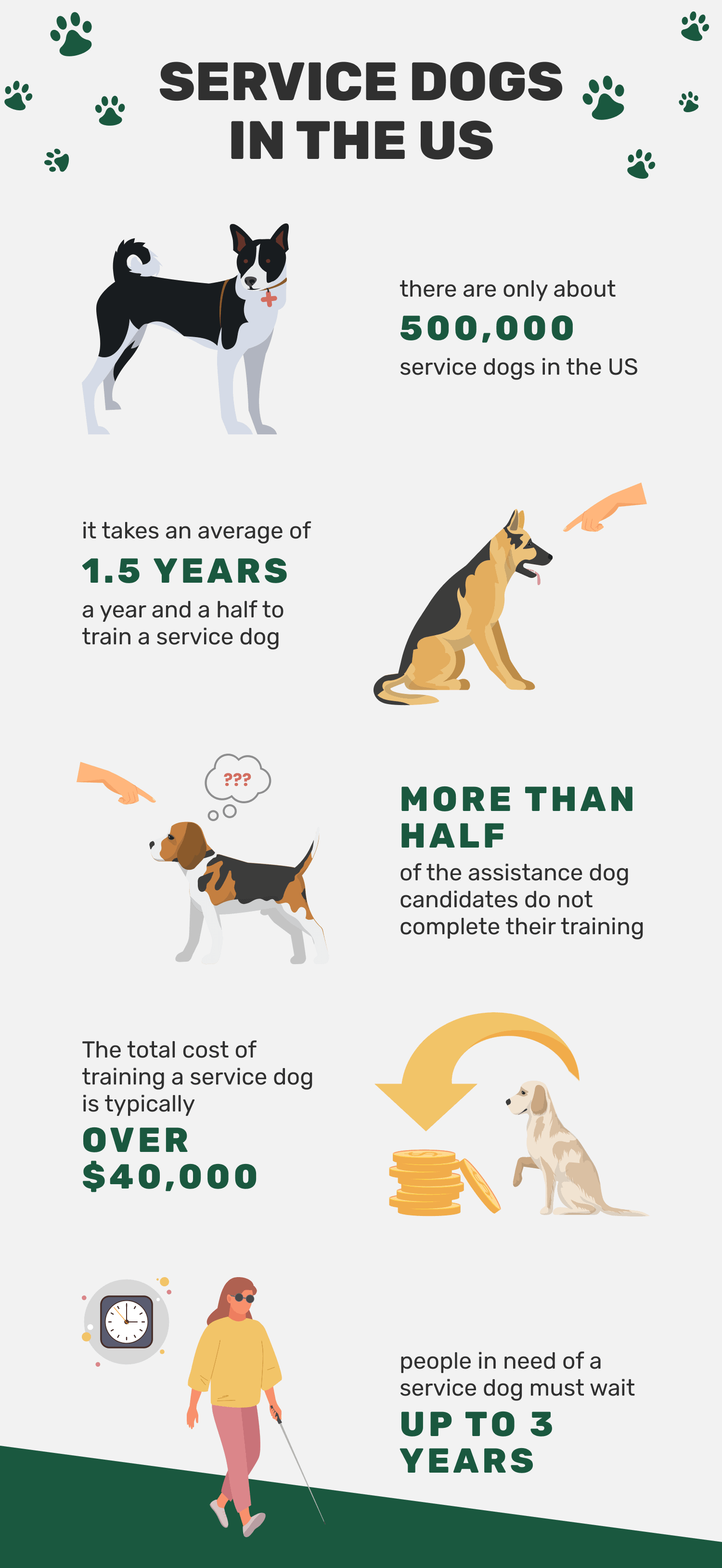In this article, you will discover the answer to the commonly asked question, “How long does it take to train a service dog?” Training a service dog is a process that requires time, dedication, and patience. From the initial stages of socialization to the advanced tasks they must learn, service dog training can take anywhere from 6 months to 2 years. However, the length of time it takes to train a service dog can vary depending on factors such as the dog’s breed, individual temperament, and the specific tasks they will be trained to perform. So, if you’re curious about the journey of training a service dog, keep reading to find out more.

Defining a Service Dog
A service dog is a highly trained and skilled canine companion that is specifically trained to assist individuals with disabilities. These disabilities can include physical, psychiatric, sensory, or intellectual impairments. Service dogs are trained to perform a variety of tasks to help their handlers navigate their daily lives and overcome barriers. They are not just pets, but working animals that provide invaluable support and assistance to their handlers.
Different types of service dogs
Service dogs come in various types, each trained to perform different tasks based on the needs of their handlers. Some common types of service dogs include:
- Guide dogs: These dogs are trained to assist individuals who are visually impaired or blind. They help their handlers navigate obstacles, cross streets, and locate objects or landmarks.
- Mobility assistance dogs: These dogs are trained to assist individuals with mobility impairments. They can help with tasks such as retrieving items, opening doors, or pulling a wheelchair.
- Hearing dogs: These dogs are trained to assist individuals who are deaf or hard of hearing. They can alert their handlers to important sounds such as doorbells, alarms, or their name being called.
- Medical alert dogs: These dogs are trained to detect changes in their handler’s body or behavior that may indicate a medical emergency, such as a seizure or drop in blood sugar.
- Psychiatric service dogs: These dogs are trained to assist individuals with psychiatric disabilities such as post-traumatic stress disorder (PTSD), anxiety, or depression. They can provide comfort, emotional support, or perform tasks to help their handlers manage their condition.
Roles and responsibilities of service dogs
Service dogs have a wide range of responsibilities depending on their type and their handler’s specific needs. Some common roles and responsibilities of service dogs include:
- Performing specific tasks: Service dogs are trained to perform specific tasks that mitigate their handler’s disability. These tasks can be as varied as retrieving medication, providing balance support, or interrupting self-harming behaviors.
- Providing companionship and emotional support: Service dogs not only assist with physical tasks but also provide emotional support and companionship to their handlers. They can offer comfort during episodes of anxiety or panic attacks and provide a sense of security.
- Navigating public spaces: Service dogs are trained to behave appropriately in public spaces, including restaurants, airports, and stores. They are well-behaved, non-disruptive, and trained to ignore distractions to maintain focus on their handler.
- Advocating for their handlers: Service dogs can act as advocates for their handlers by alerting others to their needs or indicating when their handler requires assistance. They create a bridge between their handler and the surrounding world, promoting inclusion and accessibility.
Pre-training Considerations for a Service Dog
Before embarking on the training journey with a service dog, there are some important pre-training considerations to keep in mind. These considerations will help ensure that the process is successful and that the service dog is a good fit for their future handler.
Choosing the right breed
One of the first considerations when preparing to train a service dog is choosing the right breed. Different breeds have different temperaments, energy levels, and physical abilities, which can affect their suitability for service work. It is important to choose a breed that is known for being intelligent, trainable, and well-suited for the tasks required of a service dog. Some common breeds that excel in service work include Labradors, Golden Retrievers, and German Shepherds.
Evaluating a puppy’s potential as a service dog
Once a suitable breed has been chosen, it is essential to evaluate a puppy’s potential as a service dog. Not all puppies within a breed will possess the necessary temperament, intelligence, and physical attributes to become successful service dogs. A thorough evaluation process should be conducted by experienced trainers to assess the puppy’s suitability for service work. This evaluation may involve observing the puppy’s behavior, testing their response to stimuli, and assessing their trainability.
Basic Training for a Service Dog
Basic training lays the foundation for a service dog’s future training and skills. It focuses on teaching them essential behaviors and commands that will be built upon during advanced training. The following areas are typically covered during basic training:
House training
House training is an important aspect of basic training for service dogs. They need to be reliable and well-behaved in the home environment. This training includes teaching the dog where it is appropriate to eliminate, establishing a routine, and reinforcing good bathroom habits.
Socialization to people, places, and other animals
Socialization is a crucial part of a service dog’s training. They need to be comfortable and well-behaved in various environments, around different people, and in the presence of other animals. Socialization helps them develop confidence, reduces fear or anxiety, and ensures they can adapt to new situations with ease.
Basic obedience commands
Teaching basic obedience commands is fundamental for service dogs. They need to respond reliably to commands such as sit, stay, come, and heel. These commands provide the groundwork for more complex tasks and help establish a strong communication bond between the dog and their handler.
Advanced Training for a Service Dog
Once the basic training is successfully completed, it is time to move on to advanced training. Advanced training focuses on refining the dog’s skills, teaching specific tasks relevant to their handler’s disability, and ensuring they can perform their duties reliably in a variety of environments.
Task-specific training: What it is and why it’s important
Task-specific training involves teaching the dog specific tasks that directly assist their handler with their disability. For example, a service dog for someone with mobility impairments may be trained to retrieve dropped items, open doors, or assist with dressing. Task-specific training is tailored to the individual needs of the handler and ensures that the service dog can provide effective assistance.
Off-leash training
Off-leash training is an important part of advanced training for service dogs. It involves teaching the dog to remain under control and respond to commands even when not physically restrained by a leash. Off-leash training allows for greater freedom and flexibility in the dog’s work and provides their handler with increased independence and confidence.
Advanced obedience and manners training
Advanced obedience and manners training take the dog’s basic obedience skills to the next level. They focus on refining the dog’s behavior in different situations, reinforcing good manners, and ensuring the dog can maintain focus and composure in distracting or challenging environments. Advanced obedience training is crucial for the dog’s ability to perform their duties reliably and safely.

Length of Time for Training a Service Dog
The time required to train a service dog can vary depending on various factors, including the complexity of tasks, the breed of the dog, and the individual capabilities of the dog and their handler. However, understanding the general timeline for training can help set realistic expectations.
How long does basic training take
Basic training typically takes around six to twelve months to complete. This timeframe allows for the dog to learn and master essential behaviors and commands, develop good manners, and establish a strong foundation for future training. Consistency, positive reinforcement, and regular practice are key to successful basic training.
Duration of advanced training
Advanced training can take anywhere from six months to two years to complete, depending on the complexity of tasks and the dog’s progress. This stage involves honing the dog’s skills, teaching specific tasks, and ensuring reliable performance in a variety of environments. The dog’s proficiency and consistency in executing tasks determine the length of advanced training.
Factors affecting the duration of training
Several factors can influence the duration of service dog training. These include:
- Handler’s commitment and consistency: The more dedicated and consistent the handler is in training and practicing with their dog, the faster progress can be made.
- Dog’s individual learning pace: Dogs have different learning speeds and capabilities. Some may grasp concepts quickly, while others require more time and repetition to fully understand and execute commands.
- Complexity of tasks: The complexity of the tasks the dog needs to learn can affect the training duration. More complex tasks may require additional time for the dog to master and perform reliably.
- Previous training experience: Dogs with previous training or experience may require less time in certain areas of training, depending on the compatibility of their previous training with service work.
The Role of Professional Dog Trainers
While training a service dog can often be done by their handler, there are instances where the expertise of a professional dog trainer is beneficial. Professional trainers can provide guidance, support, and specialized knowledge to ensure that the training process is efficient and successful.
When to bring in a professional
Bringing in a professional dog trainer is recommended in several situations. These include:
- Lack of experience: If the handler has limited or no previous experience in training dogs, a professional trainer can provide the necessary guidance and expertise to ensure the dog’s training progress.
- Specific training challenges: If the dog is struggling with specific training challenges, such as learning a complex task or overcoming fear or anxiety, a professional trainer can offer tailored solutions and techniques.
- Time constraints or additional support needed: If the handler has limited time available for training or requires additional support in certain training areas, a professional trainer can assist in accelerating the training process and providing guidance.
How professionals can speed up the training process
Professional trainers have extensive knowledge and experience in training dogs, particularly in the context of service work. They can help speed up the training process by:
- Designing a customized training plan: Professional trainers can assess the dog’s needs and create a tailored training plan that focuses on their individual strengths, weaknesses, and the tasks they need to learn.
- Providing specialized techniques and strategies: Professional trainers are skilled in using various training techniques and strategies that can enhance the learning process and address specific challenges.
- Offering consistent guidance and support: Regular sessions with a professional trainer provide consistent feedback, guidance, and support for both the handler and the dog, ensuring that training progresses smoothly and efficiently.

Trainability of Different Breeds
Some dog breeds are known for being more trainable and suitable for service work than others. When choosing a breed for service dog training, it is essential to consider their inherent traits and compatibility with the tasks required.
Breed-specific traits that can affect training
Different dog breeds have specific traits that can impact their trainability for service work. These traits can include intelligence, temperament, energy levels, disposition towards people and other animals, and physical capabilities. For example, breeds with a strong work ethic, high intelligence, and a calm and trainable temperament are often well-suited for service work.
Most trainable breeds for service work
While individual dogs within a breed can have different characteristics, there are some breeds that are commonly recognized as being highly trainable and successful in service work. These breeds include:
- Labrador Retrievers: Labrador Retrievers are known for their intelligence, versatility, and friendly nature. They are quick learners and excel in various service roles.
- Golden Retrievers: Golden Retrievers are highly trainable, patient, and eager to please. They possess a calm and reliable temperament, which makes them suitable for a range of service tasks.
- German Shepherds: German Shepherds are intelligent, loyal, and protective. They are often used as service dogs in roles that require both physical and mental tasks.
- Poodles: Poodles are known for their intelligence, agility, and hypoallergenic coat. They are adaptable and excel in tasks that require problem-solving and precision.
- Border Collies: Border Collies are highly intelligent, energetic, and focused. They thrive in tasks that require complex problem-solving and a high level of attention.
Difficulty Levels of Training Service Dogs
Training a service dog can come with unique challenges and difficulties. Understanding these challenges and knowing how to overcome them is crucial for successful training.
Challenges in training a service dog
Some common challenges in training a service dog include:
- Distractions and public environments: Teaching a service dog to remain focused and calm in public spaces with numerous distractions can be challenging. They need to ignore stimuli such as people, other animals, and loud noises and maintain their attention on their handler.
- Task complexity: Training certain tasks, especially those that require a high level of skill or problem-solving, can be challenging. The dog may require additional time and repetition to fully understand and execute these tasks reliably.
- Handler’s health or disability limitations: If the handler has physical or cognitive limitations, training a service dog can be more challenging. However, adaptive training techniques, assistance from professionals, and support from trainers can help overcome these challenges.
Overcoming these challenges
To overcome the challenges in training a service dog, it is important to:
- Gradually introduce distractions: Gradual exposure to increasingly distracting environments helps the dog develop focus and resilience. Begin training in low-distraction environments and gradually progress to more challenging settings.
- Use positive reinforcement: Positive reinforcement techniques, such as rewarding desired behaviors with treats, praise, or play, can motivate the dog and reinforce their learning. It helps create a positive association with training and enhances their engagement and willingness to perform tasks.
- Seek professional guidance: Working with a professional dog trainer who has experience in training service dogs can provide valuable insights, techniques, and support in overcoming training challenges. They can tailor training methods to address specific difficulties and ensure progress.

Maintaining and Updating a Service Dog’s Training
Training a service dog is an ongoing process that requires continued education and maintenance. It is crucial to keep the dog’s skills sharp, reinforce behaviors, and update their training as needed to adapt to changing needs or circumstances.
Importance of continuing education for service dogs
Continuing education plays a vital role in maintaining a service dog’s skills and ensuring their reliability in performing tasks. It helps prevent regression, keeps the dog engaged and mentally stimulated, and enhances their adaptability to new situations. Regular training sessions, refresher courses, and exposure to new environments help keep a service dog’s training up-to-date and effective.
Methods for maintaining and updating training
To maintain and update a service dog’s training, it is important to:
- Regularly practice commands and behaviors: Consistent practice of basic and advanced commands helps reinforce the dog’s training and keeps their skills sharp. Regular training sessions, even for short durations, can prevent regression and maintain responsiveness.
- Expose the dog to new environments: Introducing the dog to new environments, people, animals, and situations helps generalize their training and ensures they can perform reliably in diverse settings. Gradual exposure to new stimuli helps them adapt and respond appropriately.
- Incorporate task refresher sessions: Regularly reviewing and practicing specific tasks relevant to the dog’s role helps maintain their proficiency and reliability. Task refresher sessions can reinforce their training, provide mental stimulation, and enhance their performance.
Wrap-up: Commitment Required in Training a Service Dog
Training a service dog requires a significant commitment of time, patience, and effort from both the handler and the dog. It is a journey that is full of challenges and rewards, but one that can greatly enhance the quality of life for individuals with disabilities.
Time and patience required
Training a service dog is a time-consuming process that requires consistent and dedicated effort. Basic training alone can take several months, while advanced training can extend over a year or more. It is important to recognize that training is an ongoing journey that requires patience and persistence.
Essential qualities for a service dog handler
Being a service dog handler requires certain essential qualities:
- Commitment: The handler must be committed to the training process and willing to invest time and effort to ensure the dog’s success.
- Consistency: Consistency in training techniques, routines, and expectations is vital for the dog’s learning and reliability.
- Positivity: Maintaining a positive and upbeat attitude during training helps create a productive and enjoyable environment for both the dog and the handler.
Support available during the training process
The journey of training a service dog can be challenging, but support is available. Seek out resources such as support groups, online communities, and experienced trainers who can provide guidance, advice, and encouragement. Harnessing this support can help navigate difficulties and make the training process more manageable and rewarding.
Training a service dog is a profound and life-changing experience. It requires careful consideration, planning, and a commitment to the well-being and success of both the dog and the handler. With proper training, a service dog can become an invaluable companion and assistant, providing independence, support, and a renewed sense of empowerment.






Leave a Reply
You must be logged in to post a comment.